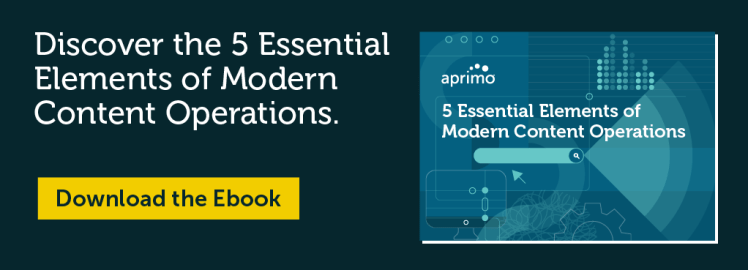CEO Corner
It has been an exciting few months for content strategy and marketing. I do not believe that a single marketer has not been tracking the rapid rise of generative AI. For marketing (and maybe for everyone else), AI represents a change equal to digital, radio, TV, or the printing press. The amount of noise around the subject is deafening. Every vendor is racing to integrate generative AI into their products, and new companies are being formed daily.
- AI is the seminal technology that will finally unlock large-scale omnichannel personalization
- AI will democratize the content creation process unlocking innovation from teams and radically reducing the time to launch new experiences
- AI will automatically scale your success by adapting successful experiences to new market segments, products, brands, and geographies
- AI will radically upend the marketing budget, shifting spend bottlenecks away from creative teams and agencies
It isn’t without complexity and risk. Brand safety, copyright risk, and ethical AI concerns are real, especially early on. Content review and approval processes will become more critical. Skill sets for the team are different and need to be developed (how many ?prompt engineers? are currently on staff?and what the heck is a prompt engineer?). Workflows will shift and take on unique challenges around metadata management. Budgeting will become less predictable and more complex (Do you have AI credit budgets as a line item for your experiences?). The volume of content that needs to be stored will increase by orders of magnitude, and content discovery and ?findability? will become incredibly difficult.
The real question is, what can your organization do TODAY to prepare to harness the benefits of AI over the next five years?

1. Develop an Actionable AI Policy And Integrate It into Your Content Operations
Many enterprises are already drafting ?AI Use Policies? that outline the corporate stance on leveraging generative AI and the guidelines and approvals required. This is a significant first step. However, whether you know it or not, AI is likely already getting used on the fringes of your experience creation operations. In addition to drafting a policy, organizations must thoughtfully weave AI governance into their operational workflows.
Tag content that was AI Influenced. Later if there are copyright issues or policy changes, you can quickly identify liability and exposure and take corrective action. Likewise, as models and prompts evolve, you may wish to revisit content to increase quality.
Ensure that appropriate human review and approvals are in place and documented.
The risk to brand safety is higher with AI-generated content, and ensuring that it gets appropriate human review is critical. Additionally, because the types of mistakes, issues, and risks are different with AI-generated content than human-generated, reviewers need the appropriate heads up and potentially a different set of review prompts or steps. Because the legal and regulatory environment for AI is rapidly evolving, operationalizing AI content workflows also gives legal and compliance teams a compelling hook to respond quickly to court decisions, legislation, and regulation on a jurisdictional basis.
Be sure that you learn from these early workflows and can replicate the rough steps used for creation to modify later or extend the work to other projects. This includes capturing the systems used, prompts, models, and tuning parameters. As AI-based models and products evolve in sophistication and capability and your own body of best practices grows, it is essential to document the inputs to generative AI systems so you don’t have to start from scratch. Because generative AI is highly API based, it now unlocks the opportunity to bulk-optimize content based on performance, improved technology, or evolving internal expertise.
2. Adapt your Content Storage, Retention, and Discovery Process
Content storage systems are a relatively stable part of marketing operations infrastructure. However, in a generative AI world, content creation will increase by a minimum of two to three orders of magnitude. Content creators might push five, ten, or even fifty versions of a creative piece through a review process. This highlights the need for more disciplined work in process storage strategies and infrastructure. For each system where content comes to rest, ensure that you clearly understand the cost implications of data volume and the scalability limits of the infrastructure (e.g., DAM ingestion rates, cloud storage fees, local NAS volume size limits).
Implement or revisit retention policies at each ?at rest? state of your content creation workflow to check for leakages in content retention. Do the same for core content repositories, CDNs, and DAM systems for ?finished goods? content. Lastly, audit your channel delivery systems like CMS, social, and marketing automation/email to understand their data retention options and look for areas where you can collapse down to single systems of records.
Finally, review the discoverability of your content. For most organizations, finding the content you are looking for is hard. When the volume of content increases by a factor of a hundred or more, this becomes much worse. Ensure that the search capabilities of your content storage systems are performant at the potential future scale. Revisit your asset tagging taxonomies for discoverability. Learn to leverage AI auto-tagging, semantic search, and summarization technologies to let AI help solve the discoverability challenges that AI creates.
To prepare for omnichannel personalization, be sure that content is tagged with all the dimensions you will ultimately personalize, such as markets, segments, personas, products, brands, etc. By doing this now, you can generate AI-based content plans to fill in all the content holes you have for upcoming multichannel experience launches.
3. Create an AI Training Strategy and Build Infrastructure
When you hire a new creative, they examine your brand and start to get a feel for your brand voice. Over time, they get better and better at creating truly great ?on-brand? content. While that happens through a combination of osmosis and onboarding for creatives, you need an intentional training strategy for AI content generation.
You will get better and better and mastering the prompts and tuning parameters of generative AI tools. Because the number of content creators will increase dramatically, the cost of acquiring this mastery must be leveraged, or you’ll waste time as you scale your early AI pilots and experience uneven quality. Integrating a prompt management strategy with a system of record, discoverability, and tool integration can help uplevel everyone’s effectiveness. As your experts find prompts that define your market segments or personas well, document them so they can be easily leveraged in tooling. For personalization, leverage these high-quality prompts to generate content renditions for segments and channels. Even when the original content wasn’t AI-generated, this is a great lower-risk early productivity gain that organizations can use as they adopt AI.
Increase your content quality tracking game. Large Language Models are trained against a staggering amount of data. This is what underlies their uncanny ability to produce high-quality results. Unlike many other AI model types, you do not need to dump mountains of data into them to get the desired results. What you do need is smaller amounts of data that represent your intended outcome. Suppose you can flag content that performed well in a specific context. In that case, you can fine-tune your generative AI models to create genuinely impactful content?creating Content ROI strategies today so that you can begin to build your training sets. As you start to produce AI-generated content, these feedback loops will allow you to make rapid progress in marketing efficacy.
As with prompts, you must create a model management strategy as you build these model feedback loops. This can be done early on and evolve over time. Deciding what aspects of your performance to train a model on is a program that marketing operations or a data science COE can collaborate on. As the stability of high-quality models increases, integrating model selection or recommendation into your content creation workflows can allow for powerful scaling of content performance and consistency as the team and project size grows.
4. Start Adapting Your Brand Guidelines for an AI World
Prompt management, AI-powered content creation workflows, training data, and models can be intimidating. One of the easiest ways to make early progress with scaling generative AI is by integrating it into your brand guidelines.
Add prompt snippets for used platforms that get the colors and fonts used in image generation correct. Add definitions for segments or brand voice. As the very early work uncovers things that work to create acceptable content, these high-level items become a lightweight ?prompt management? infrastructure that can help partners, the media, and other constituencies get better-branded content outcomes through their own generative AI projects.
5. Include AI Costs In Your Budget And Identify Pilot Projects
The adoption of AI Marketing introduces some complexity as well as excitement to the budget process. By getting a head start on the changes, while representing a small percentage of your marketing activities and spending, you can work out the process kinks and be prepared for next year’s budgeting process.
Generative AI systems generally charge based on tokens and the number of passes taken at generating content (e.g., the number of image prompts). This injects a lot of uncertainty into the total costs of content. Tokens are arbitrarily sized blocks of text (a couple thousand characters). That makes it hard to determine how many tokens will be required for the ultimate deliverable. Further, generative AI prompt crafting is iterative. It may take a few passes to get to the desired outcome. Finally, because generative AI is frictionless, it allows creators to generate many variations for teams to review and select from. Budgets have to account for the variability of generative AI’s usage-based pricing.
Pilot project selection is a target-rich environment. There are a few rules of thumb that are successful. Text is generally easier than image, video, or other content types. While AI may run autonomously while the rest of the marketing organization is golfing in the future, for early tests, embracing a ?marketer as editor? strategy works well. Projects like adapting existing high-performing content for other markets or segments are high-return use cases.
Content marketing has always been governed by laws of content scarcity. You take smart bets in your content calendar to cover as many of your priorities as you can afford. In the future, AI Marketing will create a world of content abundance. The bottlenecks for experience creation shift to other scarce resources like posting frequency, media placement costs, and similar. This takes some effort to adjust and means that processes, systems, and templates must be revisited.
Generative AI is an exciting development. While it seems alien right now, there are clear things enterprises can do today to prepare for scale.
Have you heard about our new ChatGPT integration? Check it out here!



